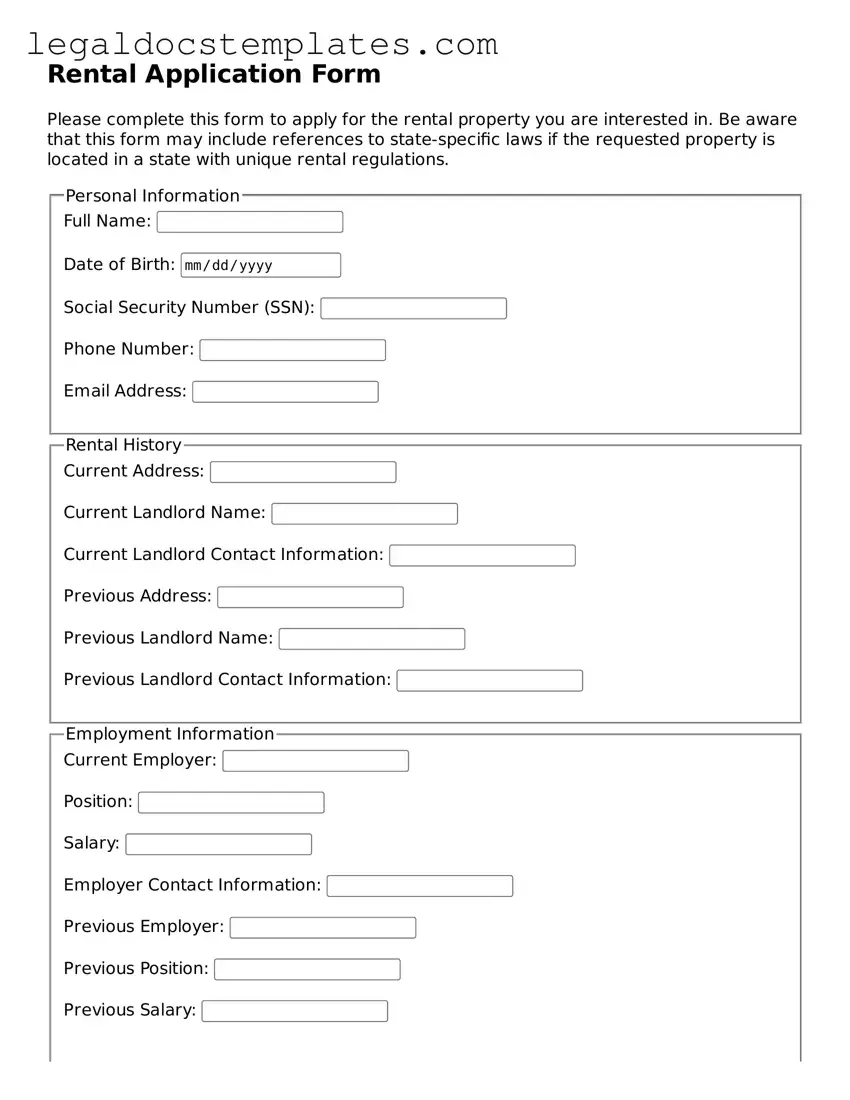One document similar to the Rental Application form is the Mortgage Application. Both serve as formal requests by individuals seeking approval for a financial agreement linked to property - the former for renting and the latter for purchasing. These applications assess the applicant's financial stability and history, ensuring they can meet monthly payments, whether it's rent or a mortgage. Each requires personal and financial information, including employment history, income, and previous addresses, aiding the decision-making process for the landlord or the lender.
Another document resembling the Rental Application form is the Employment Application. While their purposes differ - securing housing versus securing a job - both forms evaluate the applicant's background and suitability for the respective opportunity. Both forms typically ask for personal information, references, and history - employment history for job applicants, and rental history for potential tenants. This information helps employers and landlords gauge reliability and fit within their respective environments.
The Lease Agreement shares similarities with the Rental Application form, as both are integral to the rental process. However, while the application is a preliminary step to assess suitability, the lease agreement is a legally binding document that outlines the terms and conditions of the rental arrangement. Both documents capture essential details about the parties involved, the property, and financial obligations, laying the groundwork for a transparent landlord-tenant relationship.
A Loan Application form is also akin to the Rental Application form. Both are formal requests for approval based on financial credibility and history. A loan application is generally more comprehensive in financial scrutiny, but both require information on income, debts, and sometimes assets, aiming to establish the applicant's ability to fulfill their financial commitments, whether it involves making loan repayments or paying rent.
The Credit Card Application, while primarily financial in nature, shares common characteristics with the Rental Application form. Each evaluates financial responsibility and history to determine eligibility for credit or housing. Applicants must provide personal and financial information, allowing creditors or landlords to assess risk and decide on the applicant's reliability and capability to manage financial obligations responsibly.
Lastly, the Membership Application for exclusive clubs or organizations resembles the Rental Application form in its purpose to vet candidates. Both solicit personal history and references to judge suitability - financial stability and character for renters; interests, skills, and compatibility for members. This screening ensures that the individual will contribute positively to the community, whether it be a residential complex or an exclusive membership-based organization.
